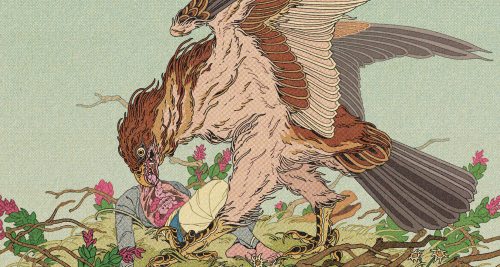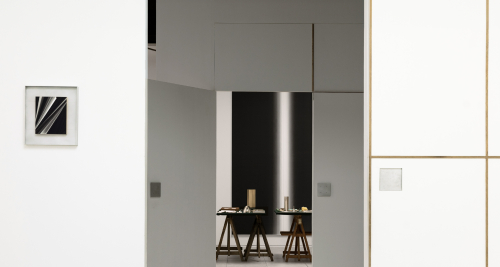Embracing Complexity and New Perspectives: Notes from the D&AD 2025 Talks
This year’s D&AD Festival brought a new sense of excitement to the design landscape— marked not just by its innovations in creative thinking, but a genuine openness to inclusivity and deeper conversations. Compared to its previous iterations, there has been a noticeable shift in its programming: panels and talks covered a wide range of perspectives, and the increased representation across both the speaker lineup and judging panel offers a much-needed layer of nuance to the way that design was accepted, discussed and evaluated.
Creativity was no longer solely an aesthetic or strategic matter, but it was framed as something humane— constantly being shaped by culture, context, lived experience and emotion. For us, it felt like a meaningful step forward: a recognition that innovation is not reliant on chasing novelty, but is rooted by answering to the banal, the everyday. It is about looking closely, listening carefully and designing with more intention.
Among the many insightful sessions that covered a broad variety of topics in design (ranging from the technical exploration of systems to emotional and personal stories), a few talks stood out— not only for their content but for the questions they left with us after the first day of the festival ended.

When Branding Becomes Performance — Luke McCabe
Luke McCabe offered something unexpected: a reminder that performance can be a powerful tool for brands. He offers the possibility of thinking about branding, which doesn’t just live on screens or in print, but as a living entity— it can breathe, move and perform. As a Show Creative Director and an alumnus of the D&AD Shift Programme, Luke unpacked how performance, music, and branding intersect to create something visceral and alive.
Rather than focusing on the polished end product, he championed the messy and unpredictable beauty of live experience. His philosophy was clear: branding isn’t just about being seen, but it is about being felt.
In a world saturated with perfectly packaged content, Luke’s approach felt refreshingly human. He invited brands and agencies alike to consider the power of vulnerability, of improvisation, of creating moments that are less about spectacle and more about connection. think differently: what if we stopped focusing solely on the polished final product, and instead embraced the messy, visceral power of live experience? There was something very human in the way he framed branding—not as spectacle, but as connection.

Rethinking Identity Systems — Leland Maschmeyer
In a session that balanced technical insight with a strong focus on philosophy, Leland Maschmeyer challenged the long-standing idea that brand identity systems are just “visual languages.” What if, he asked, they’re not languages at all? What if they’re instruments—tools built not just to communicate, but to do something?
Using compelling examples, Leland showed how the most advanced identity systems today are not merely aesthetic frameworks. They’re operational assets, designed to create real business value, improve operations, and unlock opportunities we may not have imagined. His talk was a call to action: to move beyond the grid, to think about identity not as a static expression but as a living system that adapts, evolves and works. It was a powerful reframing of the role that design plays in organisations— and a reminder that form without function is no longer enough.

A Typeface for Everyone — Veronika Burian & José Scaglione
Typography doesn’t always get the spotlight at festivals like D&AD, but Veronika Burian and José Scaglione made a quiet and powerful case on why it should. Their session introduced Futura 100, a reimagining of Paul Renner’s iconic font—this time designed to support over 90% of the world’s population.
With 23 writing systems now included- from Thai to Georgian to Devanagari- this version of Futura finally speaks to a truly global audience. Their project wasn’t just about a mere ‘visual update’—it was about broadening (true) access. About ensuring that people around the world can see their own language, their own identity, reflected in a typeface once considered Eurocentric and exclusive.
In doing so, Veronika and José reminded us that design isn’t truly contemporary unless it’s inclusive. And that typography—often taken for granted and invisible— can be a subtle but radical tool for connection.

Small Ideas, Big Heart — Jury Insights
One of the most moving insights didn’t come from the main stage, but from the juries themselves. The judges reflected on the power of small ideas, and how they can make a big difference.
There was a project that transformed intimidating MRI machines into illustrated stories children could understand and engage with. Another designed custom flip-flops for people with disabilities—simple, functional, and deeply personal. And then, there was also a hauntingly beautiful campaign that visualized space debris as imagined constellations, blending science and poetry in a way that made the issue feel immediate, intimate and emotional.
These weren’t loud, flashy executions with giant budgets. But they were thoughtful, empathetic and intention— emphasizing on the importance of designing with care. Sometimes, the most creative thing you can do is solve a small problem really well. The jury’s reflection reinforced that creativity, at its best, doesn’t chase scale. It honours meaning.

What we saw on stage at D&AD this year wasn’t just creative innovation—it was creative maturity. A willingness to slow down, to question assumptions, to let go of the trend cycle in favour of ideas that go deeper. The festival served as a reminder that design is no longer about show nor is it about telling people who you are. It’s about co-existing and connecting with empathy, humility and purpose. It’s not just a visual discipline, it’s a human one. And when practiced thoughtfully, design doesn’t just solve problems; it builds bridges, tells stories and makes the world a little more understandable.
This year, D&AD didn’t just inspire us. It challenged us to think differently, to design more inclusively, and to stay open to the evolving ways creativity can show up in this world and hopefully, better us.










